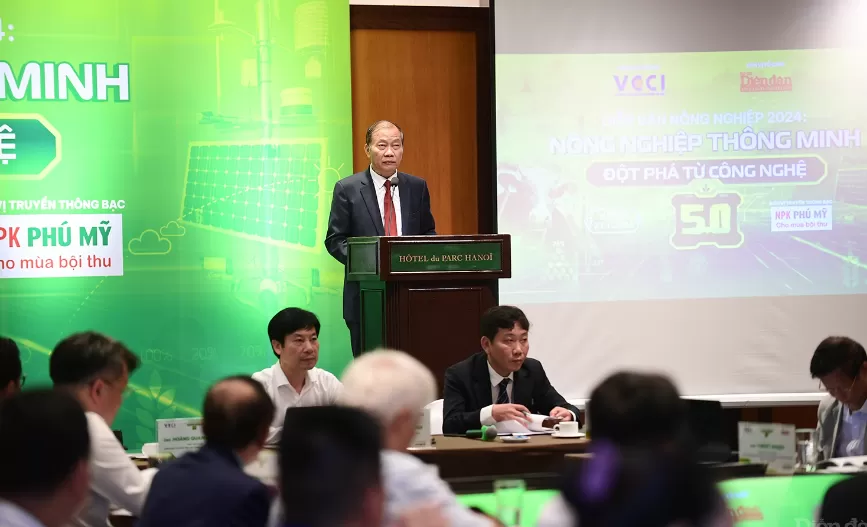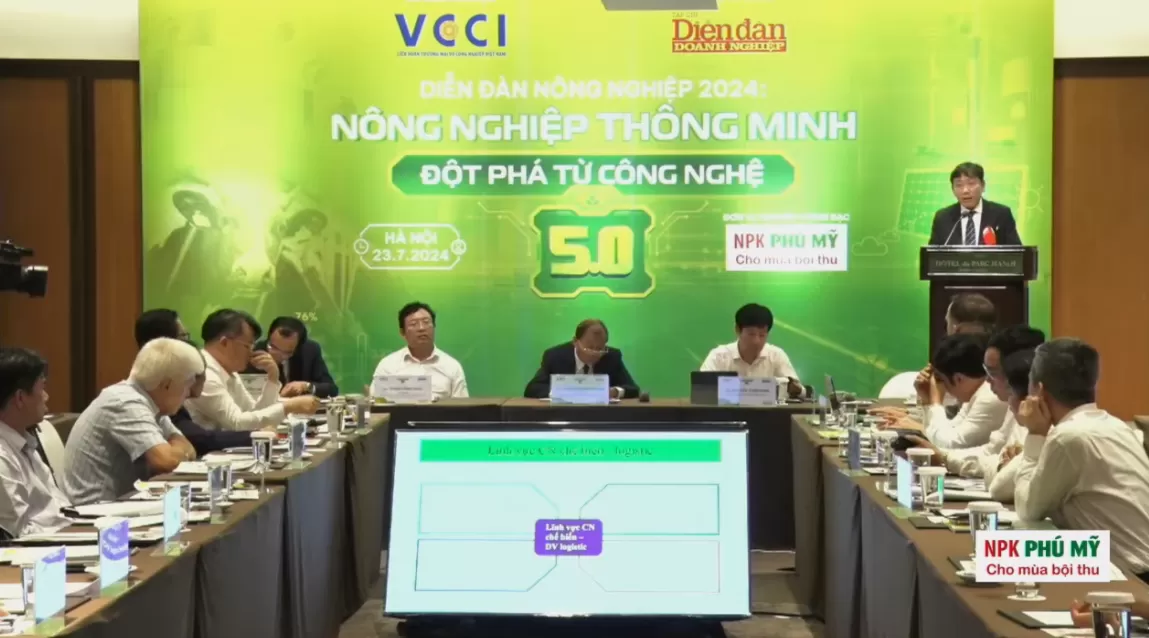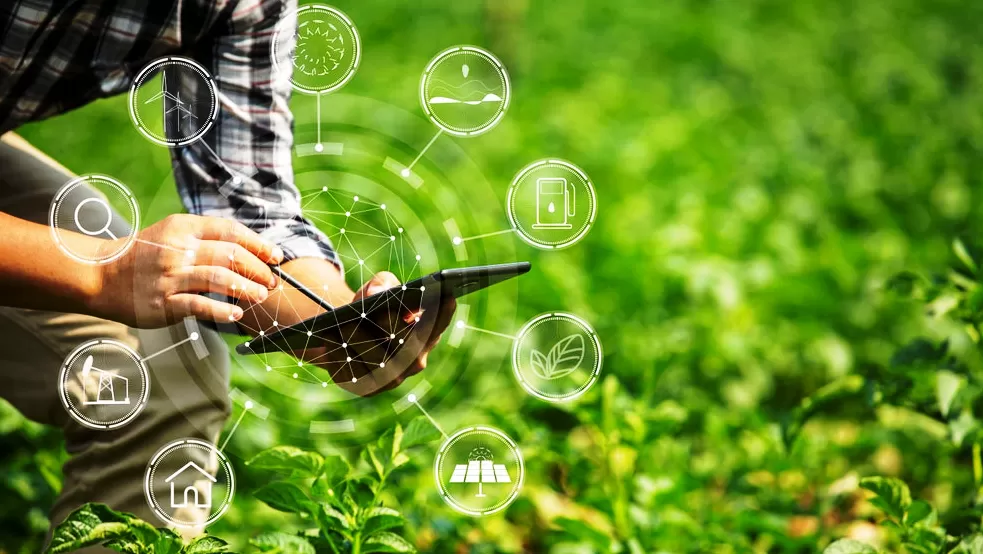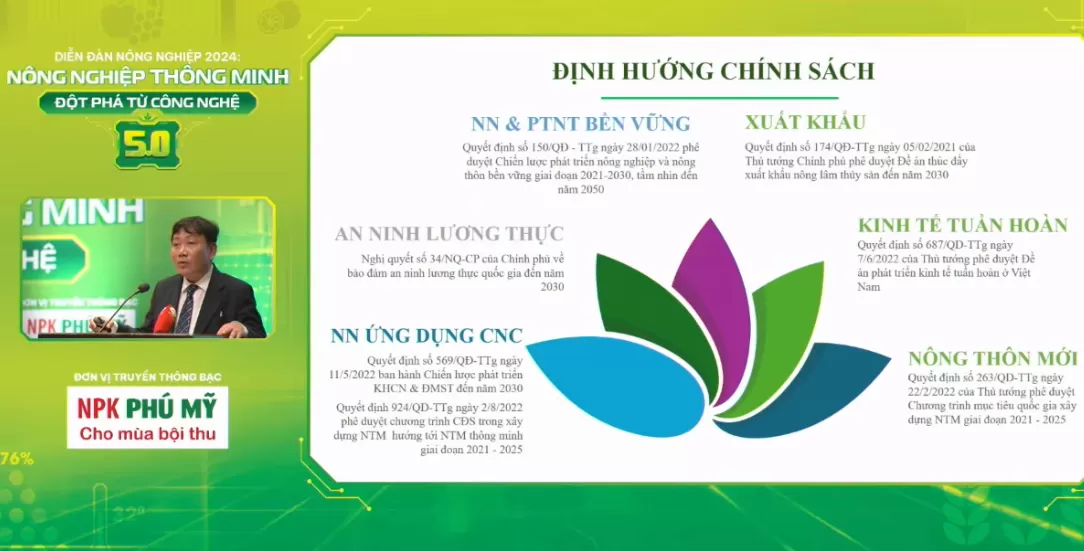Opportunities for sustainable agricultural development from applying 5.0 technology
(PetroTimes) – The 2024 Agriculture Forum “Smart Agriculture Breakthrough from 5.0 Technology” has contributed to identifying opportunities and challenges for Vietnamese agricultural enterprises, providing solutions to apply 5.0 technology, creating a sustainable agricultural production and supply chain...
On July 23 in Hanoi, Business Forum Magazine coordinated with relevant agencies to organize the 2024 Agriculture Forum “Smart agriculture breakthrough from 5.0 technology”. PetroVietnam Fertilizer and Chemicals Corporation (PVFCCo) accompanied the forum.

Speaking at the Forum, Vice President of the Vietnam Federation of Commerce and Industry (VCCI) Hoang Quang Phong affirmed that in recent years, Vietnam's agricultural sector has continued to develop in both scale and production level, maintaining a relatively high growth rate, affirming its important position as a pillar of the economy, firmly ensuring national food security.
According to VCCI Vice President Hoang Quang Phong, according to statistics in the first 6 months of 2024, the GDP growth rate of the agriculture, forestry and fishery sector reached 3.38%, the highest in the first half of the year in the past 5 years. Of which, agriculture increased by 3.15%; forestry increased by 5.34%; fishery increased by 3.76%. Total export turnover reached 29.2 billion USD, an increase of 19% over the same period in 2023. With this result, the agricultural sector is confident in raising the export target of agriculture, forestry and fishery for the whole year to 57-58 billion USD, 2-3 billion USD higher than the target assigned by the Government at the beginning of the year.
In the context of many opportunities but also full of challenges due to the strong development of the Industrial Revolution, VCCI Vice President Hoang Quang Phong commented that Vietnamese agriculture will not be able to continue to compete on the basis of low cost, labor-intensive and resource-based. It is necessary to change the mindset in agricultural development, that is, to shift from agricultural production to agricultural economy. In addition, the 4.0 industrial revolution has spread widely with the efforts of many countries in digital transformation, leading to rapid development and at the same time changing the growth model.
However, in the context of the world facing many global challenges, such as geopolitical conflicts, depletion of natural resources, shrinking cultivated areas, global warming, saltwater intrusion, etc., promoting the application of scientific and technological advances in economic sectors in general and agriculture in particular is very urgent. In particular, Vietnam's agricultural sector, which is dominated by tens of millions of farmers with limited production scale, low technology level, low labor productivity, is vulnerable and subject to many impacts of the rapid development of industries.

VCCI Vice President Hoang Quang Phong stated that it is necessary to approach the development of highly efficient agriculture based on the application of high technology, not simply the development of high-tech agriculture. Therefore, developing smart agriculture, high-tech agriculture, and applying 5.0 technology to commodity agriculture is one of the trends being applied by many businesses, farmers, and cooperatives and has proven its effectiveness, contributing to bringing a new look to the agricultural sector.
The above sustainable development direction is also an opportunity created on the basis of technology 5.0. While the Industrial Revolution 4.0 is a combination of robots, artificial intelligence, fast networked devices and big data in a production environment, the efficient and fast operation of factories depends entirely on technology, the Industrial Revolution 5.0 focuses on the cooperation between humans and machines, thereby improving the skills of workers, providing added value in production leading to customization and personalization of goods.
“In other words, agriculture applying 5.0 technology opens up a vision of an efficient, highly productive agriculture, in which human cooperation with science and technology is promoted. In the agricultural sector, when applying 5.0 technology with modern science and technology goes hand in hand with producers, tens of millions of farmers will have access to and be trained in skills to adapt to new technology, creating multi-value agricultural products for sustainable agriculture,” emphasized VCCI Vice President Hoang Quang Phong.

VCCI Vice President Hoang Quang Phong said that the 5th industrial revolution is a great opportunity for the agricultural sector when the application of modern science and technology goes hand in hand with investment by producers, businesses and the State, contributing to improving skills, qualifications and capacity enough to adapt to new technology, creating multi-value products.
Therefore, the Vietnamese agricultural sector needs the participation of people, businesses and managers, relevant ministries and sectors. The application of science and technology and innovation in agricultural production activities requires close connection between agricultural enterprises and organizations and science and technology enterprises. This is the process of both implementing and receiving feedback and continuous adjustment to continuously improve a green - circular and sustainable agricultural ecosystem. Therefore, the connection and close cooperation between agricultural enterprises and science and technology enterprises must be organized as an institution for investment, production and business cooperation in the agricultural sector.

At the forum, delegates discussed and proposed a number of specific solutions such as: It is necessary to enhance the capacity to access smart agriculture; continue to deploy closely to the specific conditions of the industry, locality, enterprise and farm to select appropriate technology solutions; localities continue to do well in training human resources, especially high-quality human resources; expand international cooperation...
Permanent Vice President of the Association of High-Tech Agricultural Enterprises Dang Kim Son proposed that the Government should support enterprises in forming high-tech agricultural zones and high-tech agricultural areas associated with specialized areas of key agricultural products. Apply special preferential policies to attract and support large enterprises and corporations to invest in high-tech agriculture. At the same time, quickly innovate mechanisms and perfect the organizational system of research institutes and universities, truly linking research and training, creating motivation for scientists to focus on innovation, paying attention to the final effectiveness of scientific products...
According to Le Van Tuan, Deputy Head of Agribank Credit Policy Department, in its business strategy, Agribank has identified high-tech agriculture as a priority sector and always offers many incentives to customers who borrow capital. Mr. Tuan recommended that ministries and branches should quickly issue legal frameworks, regulations and guidelines related to high-tech agriculture and green finance to clear the legal corridor for businesses as well as financial institutions to participate in the high-tech agriculture and green finance market.
N.H
